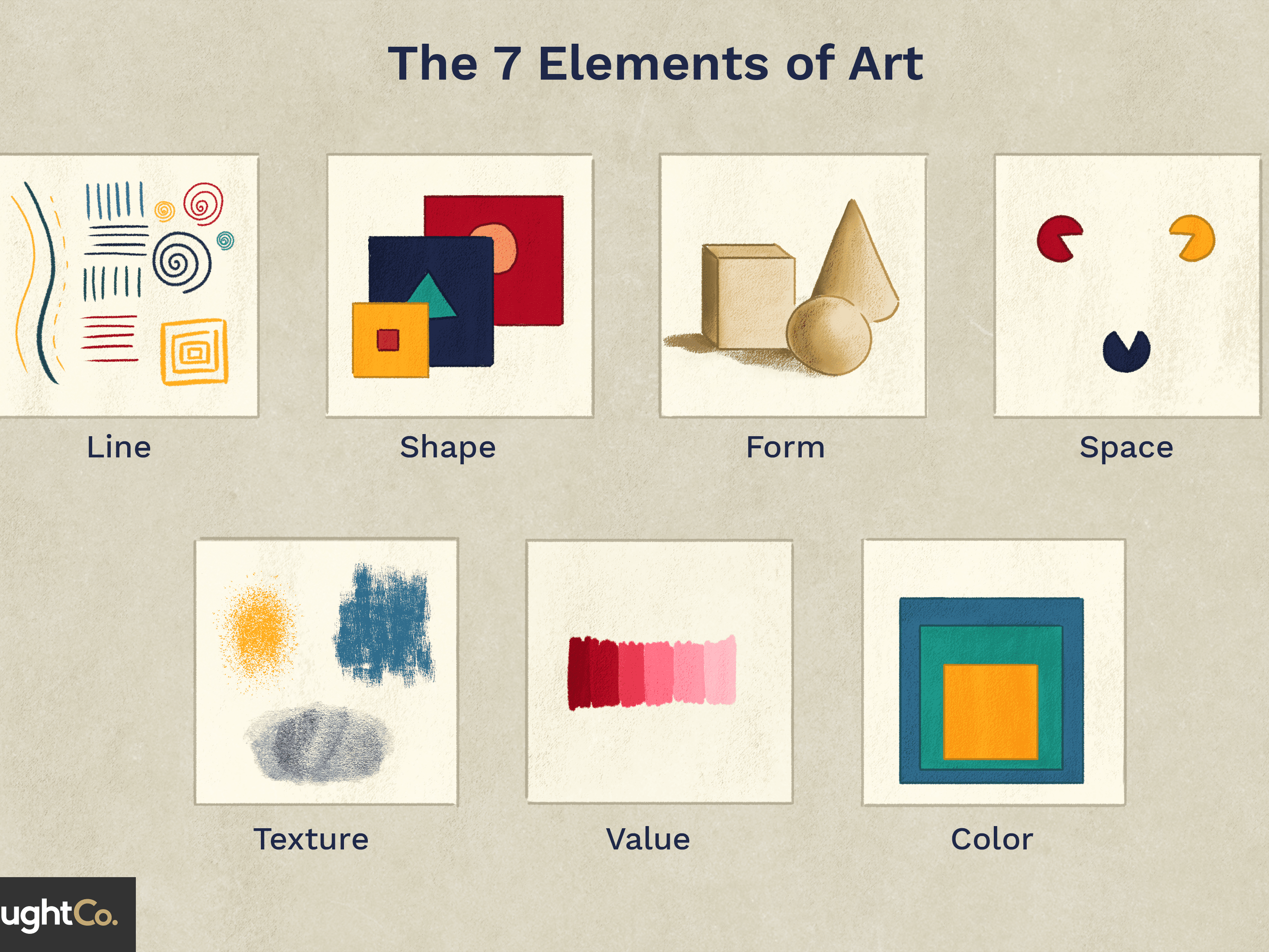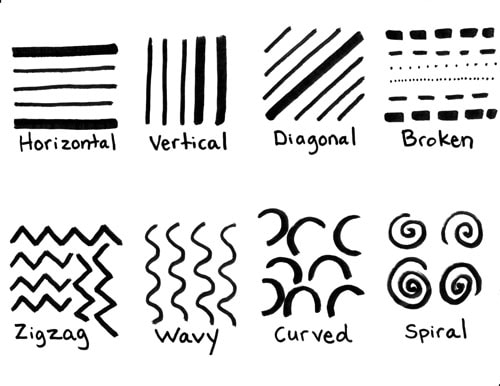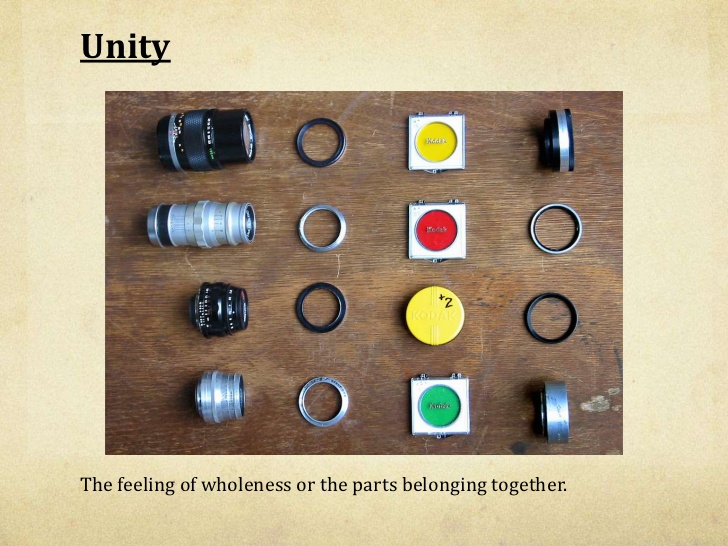Back to: CULTURAL AND CREATIVE ARTS JSS2
WEEK 1 & 2
Welcome to JSS2!
We are eager to have you join us in class!!
In today’s class, We will be discussing INTRODUCTION TO ELEMENTS AND PRINCIPLES OF ART AND DESIGNS. We hope you enjoy the class!

INTRODUCTION TO ELEMENTS AND PRINCIPLES OF ART AND DESIGNS
The elements and principles of art and design are the basic or elementary components of art and design used as a guide to creating works of art. Different forms of art share the use of the same concept of elements and principle. Music has form and composition that can be symmetrical or asymmetrical (like visual arts) and they occur in balance. contrast is also common among them to evoke excitement and emotion. Though in the case different terms would have similar meanings, there can be a difference in the use of unity and variety.
Cultural and creative-arts oriented messages are communicated with beauty, balance and harmony through the applications of elements and principles of art in forms of artistic expression used.
Elements of Art
Elements of arts are the basic or elementary visual components of a work of art. They are as follows: line, shape form, space, colour, texture and value.

Line
A line is a mark made on a surface by a moving point or dot or dots. It is an optical phenomenon of a visual part that enables the eyes to move within a work of art. It is also used by the artist to direct the eye of the viewer around the work of art.
Symbolic uses of Line
- Straight lines signify different moods and affection;
- Curve lines reflect greater dynamism, flexibility;
- Horizontal lines give an expression of calm, tranquillity, relaxation and space;
- Vertical lines leave an impression of height and elegance, dignity, formality, stability and strength.
- Diagonal represents action, activity, excitement and movement.
Practical uses of line in our everyday life
- Lines are used for writing.
- It is used to create or define boundaries.
- It forms the basic for drawing and painting.
- It can be used as an imaginary check.
- Lines are used in igniting moods and affection.
- Lines are used in simplifying visual factors.
- It is used for emphasis and expansion of gestures.
- It is used to unite or divide other elements in the artwork.
- It is used to create or interpret the shape and visual forms.
- The direction in movements is interpreted with the use of lines
Types of lines

These are the basic types of lines;
Vertical line: A line that moves from up to down or down to up, perpendicular to the earth, extending upwards towards the sky.
Horizontal line: This is a line that moves from right to left, or left to right, parallel to the earth.
Zig zag line: this is a line in sharp diagonal motion in alternating directions.
Diagonal line: this line is neither vertical nor horizontal. It is an angle slanted in between the two.
Curved line: This is a line that is continuously bending without an angle.
Shape: Shape is an analyzed space defined by a or by contrast to its surrounding.
Form: A form is the dimensional form and looks of an object or description for any three-dimensional objects. The form can also be interpreted by light and dark through shading or painting.
Space: Space is the free area between the solid objects or between shapes and other elements in a work of art it is everywhere around us a platform for arranging objects and elements either in the art of living, whether it is two dimensional like drawing and painting or three dimensional like sculpture and architecture.
Texture: Texture is the perceived surface quality of a shape, form or object.
Value: Value is also referred to as tone, is the presence of light and dark shades in a work of art. Artists use to create an illusion of depth, mass, form and three dimensional on a flat surface in a work of art.

Principles of art
Principles of art are a mental guide that helps the artist in the proper use and distribution of the elements of art when creating a form of art. In creating a work of art, the artist determines what the centre of interest of the artwork will be.

Balance: This is the spread or distribution of the visual weight in a work of art through the creative arrangement with the elements of art. The three types of balance, namely: symmetrical, asymmetrical and radial. Symmetrical balance has an equal distribution of visual weight on both sides. Asymmetrical has different visual weight size on each side at a distance that maintains balance. Radial balance is a circular balance, distributed out from a central object to maintain balance.
Proportion: The size of one part of a work of art in comparison to its other part is called proportion. Proportion can be used to manage space, create distance, show emphasis and achieve balance.
Movement: The use of the line, colour, values, textures, forms, shape and space to direct the viewer’s eye into an art piece, from one part of the piece to another is termed the movement
Unity: this is the resultant product when the elements and principle of art are applied to create work of art; the agreements in relation to each other as they fit together to create an overall message or impression.

Variety: This is the use of different qualities or styles of application of art to create a desired visual effect.
Emphasis: This is the visual reinforcement through the arrangement of the element of art towards something the artist wants the viewer to pay attention to.

We have come to the end of this class. We do hope you enjoyed the class?
Should you have any further question, feel free to ask in the comment section below and trust us to respond as soon as possible.
In our next class, we will be talking about Arts Materials Tools And Uses In Visual Arts. We are eager to meet you there.

What is the difference between element and principle of design
Good question.
Elements of design are the basic components involved in creating designs. Also, elements are the tools that will help you with your design. Just like Color, Value (tone), Texture, Shape, Form, Space etc. While principles of design are the rules you should follow in design for the best outcome. To have a great design you should consider each principle during your process. They are Contrast Emphasis, Balance, Unity, Pattern etc.
I hope this is clear enough.
Can u explain what you mean by symbolic uses of art
Hello, Felix!
Do you mean “Symbolic uses of lines”?
Thanks for the update
I really appreciate for the good work done on this note
Thanks for choosing Classnotes.ng!
Please feel free to recommend the platform to your family and friends. We can also be reached via [email protected]
Cheers!
Please i don’t still get the difference between rhythm and movement .please can you explain more.
I HAVE BEEN TEACH THIS TOPIC INSIDE THE CLASS
Sorry pls are these the real notes of jss2 cultural and creative art class according to the ministry of education, i’m just asking to be sure, by the way I am new here.
is there a difference between element of design and elements of art?
I don’t think so. The names can be used interchangeably.
I reallyeally thank the tutor and this website. I have found the topic that I was searching for. Now I have more knowledge of elements of art and principles of design.
Nice lesson learnt well.
Please how can I get the note
We’re glad you found it helpful😊 For even more class notes, engaging videos, and homework assistance, just download our Mobile App at https://play.google.com/store/apps/details?id=com.afrilearn. It’s packed with resources to help you succeed🌟
this web really helped my get an a1 in my art
Thanks for the lesson
yes, so clear thank you
✅
Thanks a lot
THIS LESSON IS BETTER THAN THAT OF MY SCHOOL😂😂😂😂😂😂
What about color and textile